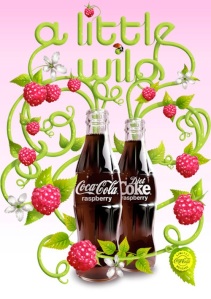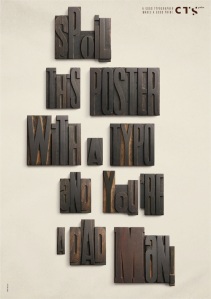Hi everybody,
Being interested in every kind of input we receive while watching an ad, I decide to focus on the importance of the advertisement text.
I’ve always been interested in advertisement’s text and, particularly, in its effects on customers: I always ask myself why something apparently so insignificant could influence people’s attitudes.
You would be surprised knowing how much we could be influenced by some seemingly marginal elements of the ad.
First of all, I found an interesting book entitled: “Confessions of an Advertising Man” (David Ogilvy, 2006). The author tries to point out all the best way to make ads effective. He says that the text, in particular the headline, has the most important role in the advertisement because it grabs people’s attention and it is the element which motivate people to read the rest of the ad. For this reason it should be characterized by certain features:
• It should be attractive;
• It should contain words positively connoted as ‘free, new, now, announcing, improvement…;
• Long ads are more effective than short ones;
• It should contain a promise;
• It should make the reader curious about the content of the ad;
• It has to be neat and clear;
• It should be positive;
• It should always have a meaning.
In this article: “Effects of Typographic Factors in Advertising-Based Persuasion: A General Model and Initial Empirical Tests” the same topic is discussed in detail.
When the authors talk about typography, they refer to the style, spacing and layout of words and sentences in printed texts or showed on a display. In particular, typeface features are related to the concrete image of the text. Spacing, on the other hand, refers to the space between words, between letters in the same word and between lines in the whole text. Finally, the layout features handle the words and text’s location. All this elements affect people’s elaboration process and, through their impact on the semantic correlation, advertisement’s legibility and looks, they can persuade people and somehow modify their behaviours.
In particular, the researchers try to investigate the relation between typeface features (type style, type size and x-height) and legibility. Type style, type size and x-height are important for the legibility of the text, but what the authors are interested in, is their interrelation between.
Precisely, they found out that, letter size (linked with x-height and type size) is more effective for advertisement’s legibility than the capital distinctiveness (type style). In fact, the bigger letters are, the less important becomes their distinctiveness. Inversely, decreasing the letters’ size, the type style becomes more important for ad’s legibility. The same happens with x height. About the relation between type style and x height, since it could be considered a letter size feature, it has much more impact on people’s legibility. For this reason, if we relate x-height and type style, the effects on legibility of type style increase if the x-height decreases.
Finally, they try to prove this hypothesis through an experiment in which they measure the participants’ reading execution. The results point out that, even if there’re individual differences (personal reading skills), the typography features of the text are linked to ads’ legibility, especially if we consider the relation between the three features aforementioned.However, even if the study concerns persuasion, the results do not find out how the typography of print ads could affect two typical tests of consumers persuasion: brand or ad attitude.
As Pieters, R., & Wedel, M. (2004) states, the best print ads are the ones that can capture consumers attention. In this way people extract the ad from the environment and choose to select its information above all the other ads. The author states that, while the elaboration of the picture is naturally older and connected with pre-attentive system, the text processing is natively younger and is linked to the attentive process, so it’s slow, effortful and intentional.
For these reasons the elaboration of texts requires more eye fixation and, for the same surface units, text processing takes much more attentive efforts than the images.
The authors so, suggest that increasing the ad surface addressed to text could intensify consumers’ attention on text information.
The results confirm their hypothesis and, while pictorial information doesn’t need a surface units increasing to grab attention, expanding text surface will rise the people’s attention upon it.








I really enjoyed reading your blog, I too have always found interest in the possible effect that the design elements of a brand logo or advertisement has on the consumer. In fact I came across a research paper by Subburamu (2010, http://www.psych.nyu.edu/pelli/pubs/subburamu2010intel.pdf) that looked into the effect of the typography/ text design of a movie summaries and whether it could potentially devalue a movie in the eye of the consumer just because the text was unattractive. They created a movie review using a common and ‘ugly’ font and asked participants to read it and then make a judgement on what they would rate that movie. They found that the ‘ugly’ font did in fact bias participants into rating that movie significantly less than the movies with the ‘prettier’ summaries. It has been argued that typeface/text design should be completely unobtrusive and transparent so that the reader can look through the text and into the message it is conveying (Warde, 1927). Although I do think that this is true, in order for this to happen the type-face does need to have a lack of transparency, in the sense it should be, as described by typographers, ‘simple, legible, quiet and plain’ (Lupton, 2004).
LikeLike
What an interesting Blog. I have never thought about it until i read your blog which made me go and have a read up. I found a good book by AW white 2007 called advertising design and typography which is all about design strategies and how typography can help give the audience a persuasive message. its very important that advertisements grab viewers attention before they “switch off” to the advert and having a catchy title might just be the way. however, as Helena said using the correct font is important as too small or too fancy requires the viewer to concentrate and they might just switch off automatically. it needs to be precise and to the point.
well done on an interesting blog.
LikeLike
A very interesting concept for business marketing and an enjoyable read! It is important to note how cost effective a set text can be, potentially increasing sales through attention grabbing publicity, as Pieters and Wedel would argue. [3] With it being such an easy and simple tactic to implement, it’s a wonder why more business don’t use it. As Sharad Agarwal, the founder of Cyber Gear said, “text ads do not take any real estate and are a better option for monetization.” [1]
Additionally a set text type, and how it’s set out can set the tone for the entire business, or news article or website or wherever it may be. If set the logo as a bold, strong text you may be lead to believe the business is an efficient business and if it were set in comic sans for example maybe a fun, laid back article to read. [2] A strong visual can not only grab attention and set tone but can also associate. For example, with a known brand if it were to be written in the classic coke signature writing then you will recognise that the advertisement belongs to that brand.
References
[1] http://online.wsj.com/article/PR-CO-20130509-908957.html
[2] http://desktoppub.about.com/od/ads/a/ad_parts.html
[3] Visual Marketing: From Attention to Action, Michel Wedel, Rik Pieters
Psychology Press, 2 Oct 2012
LikeLike